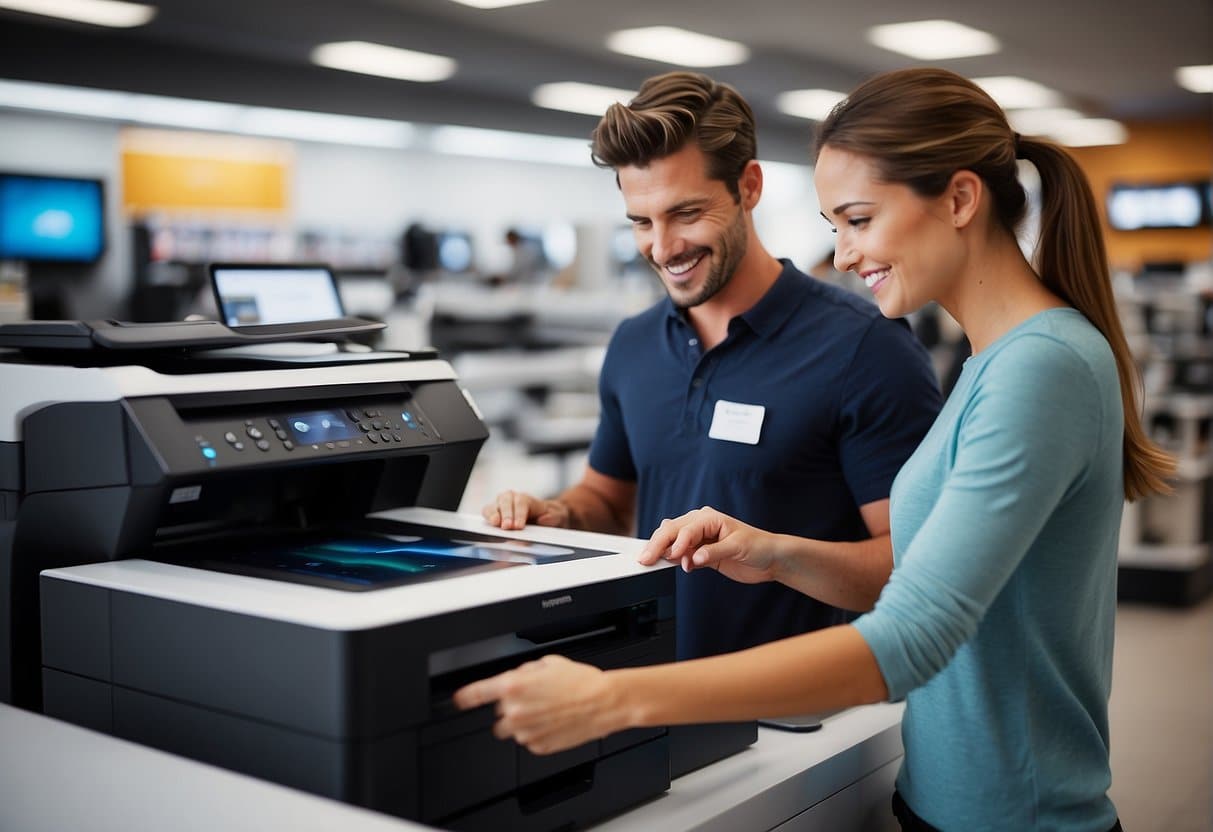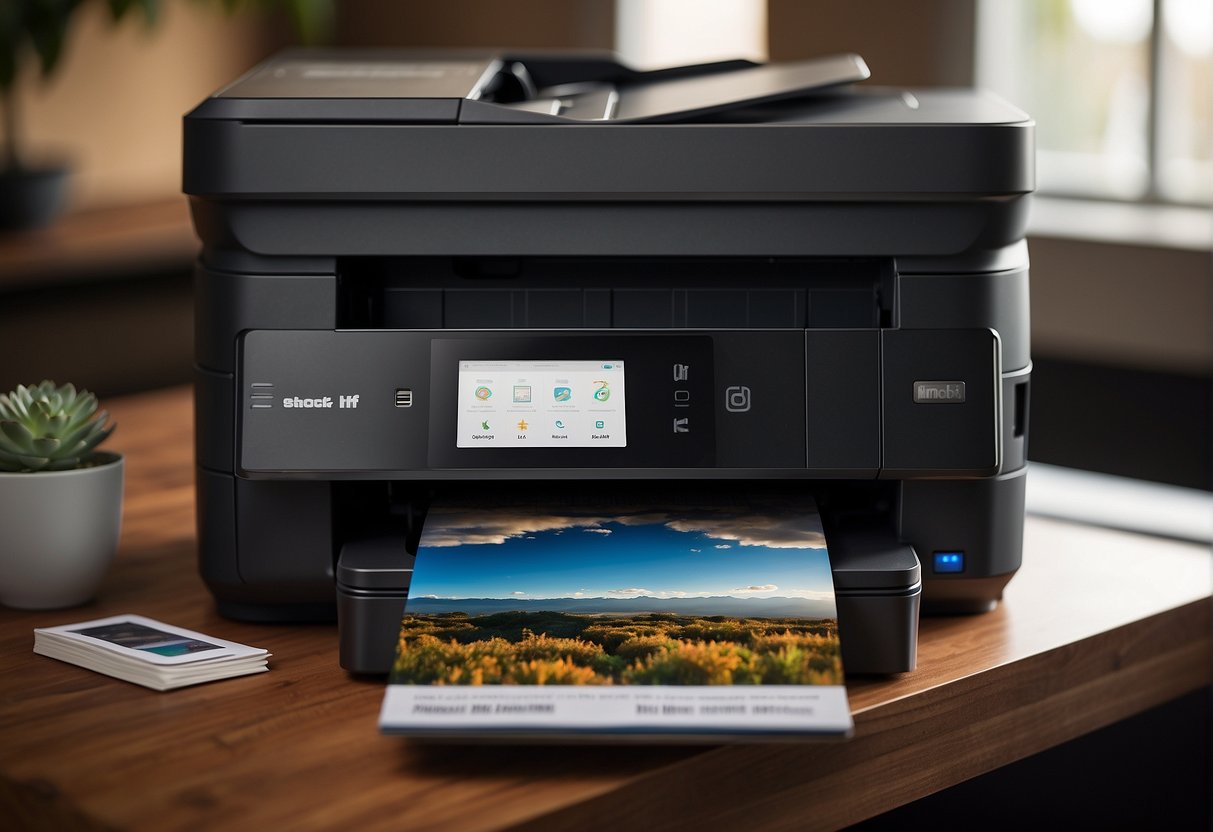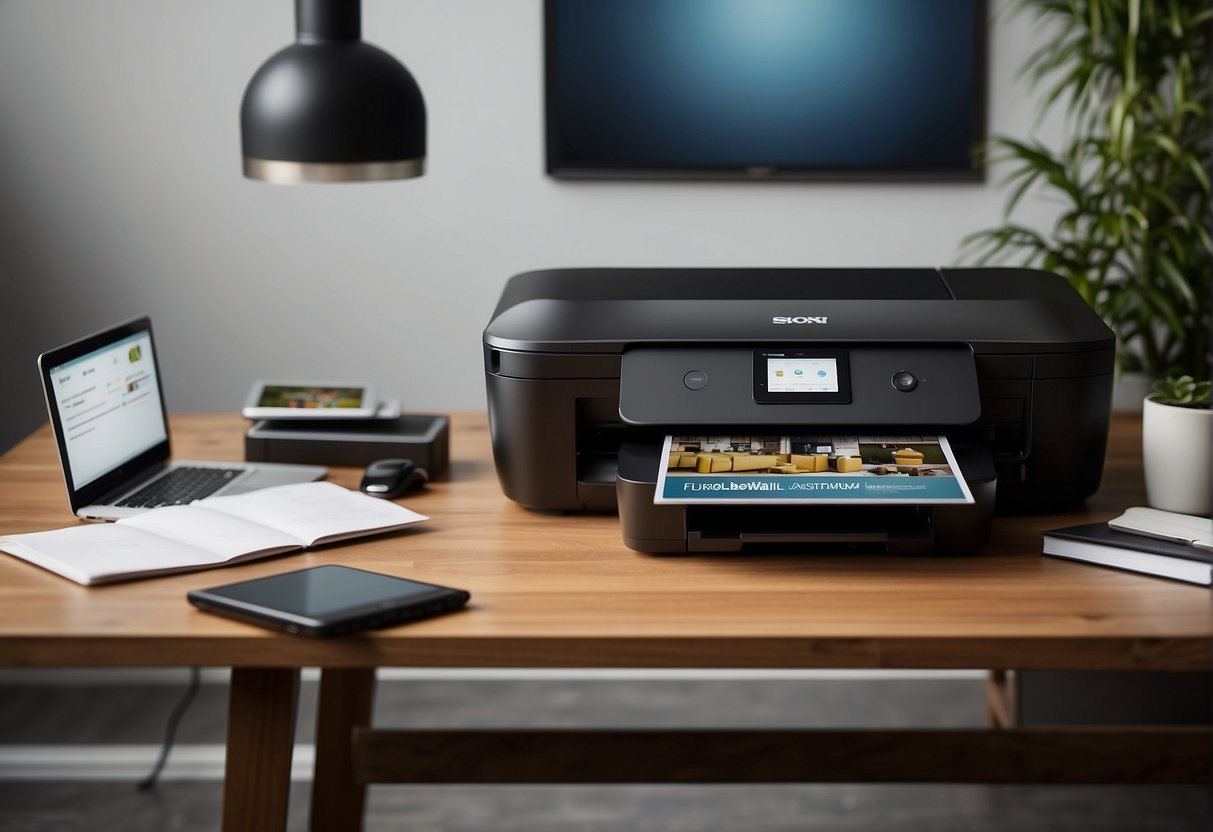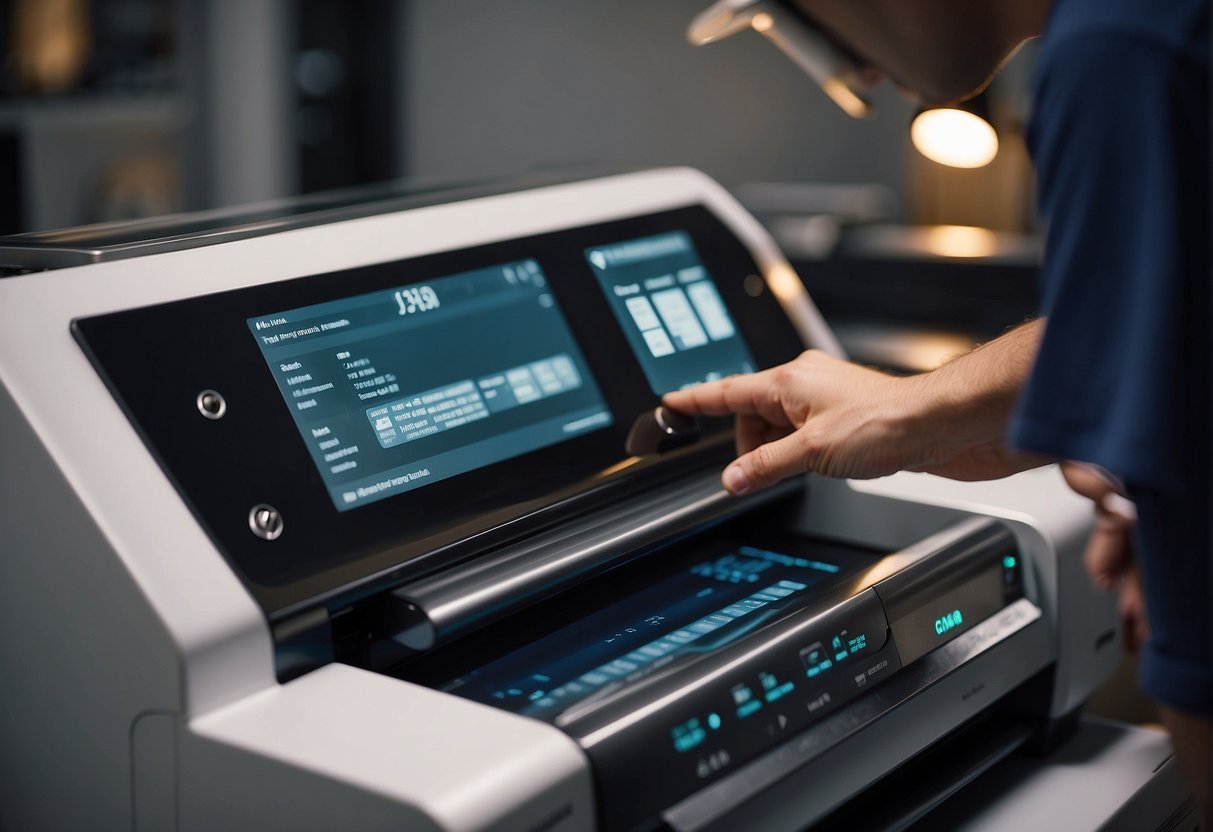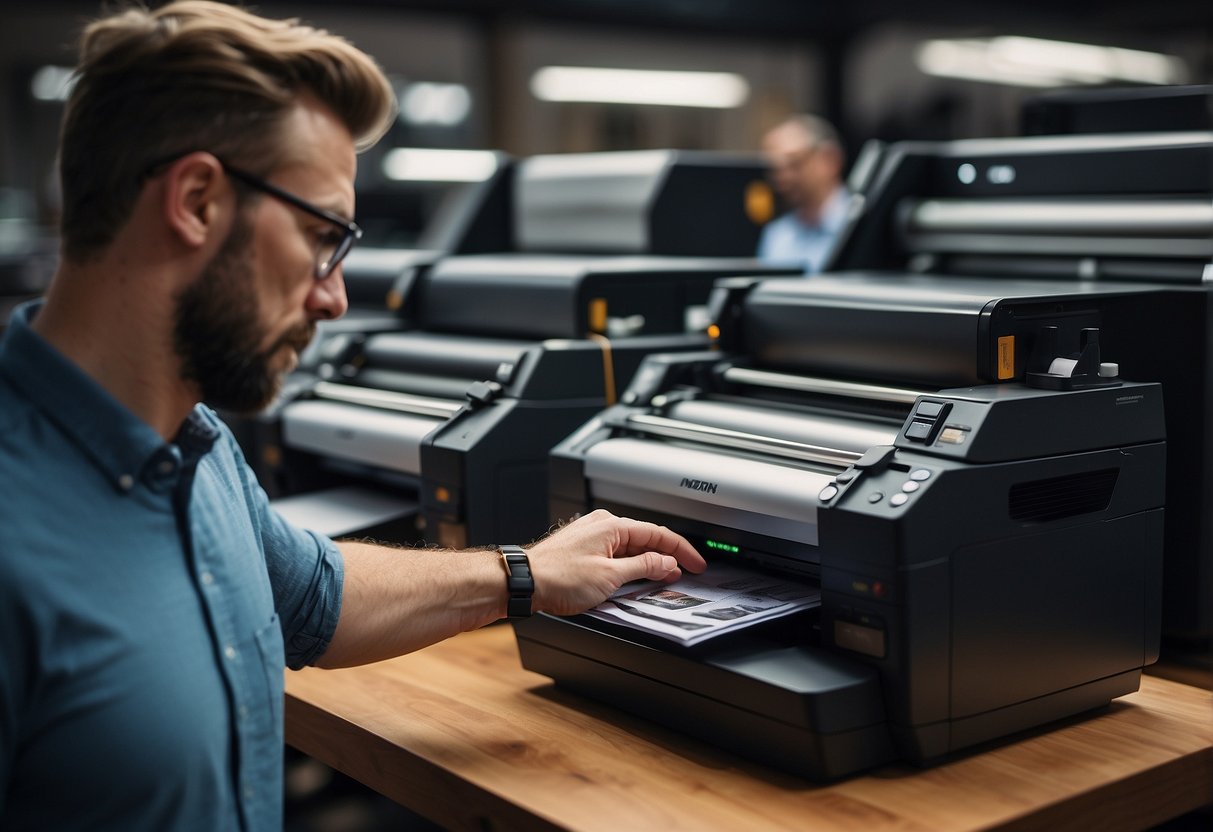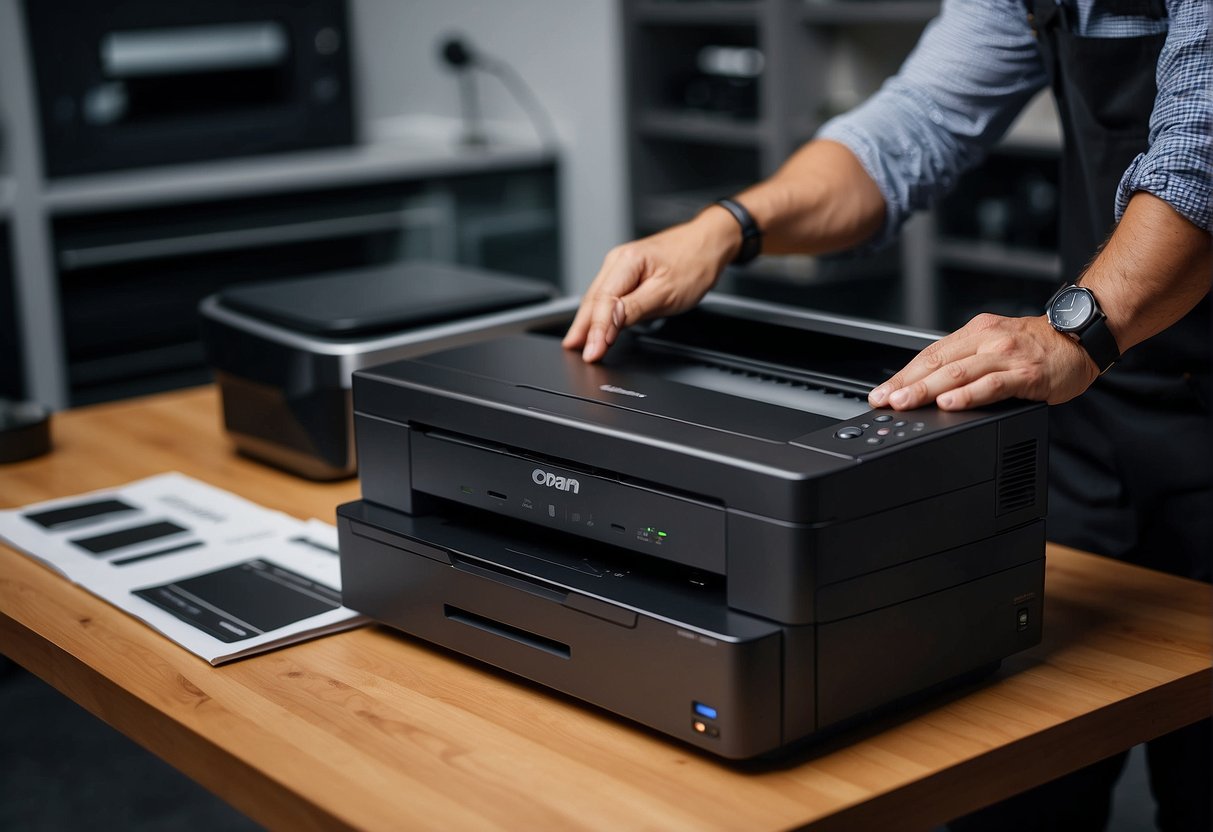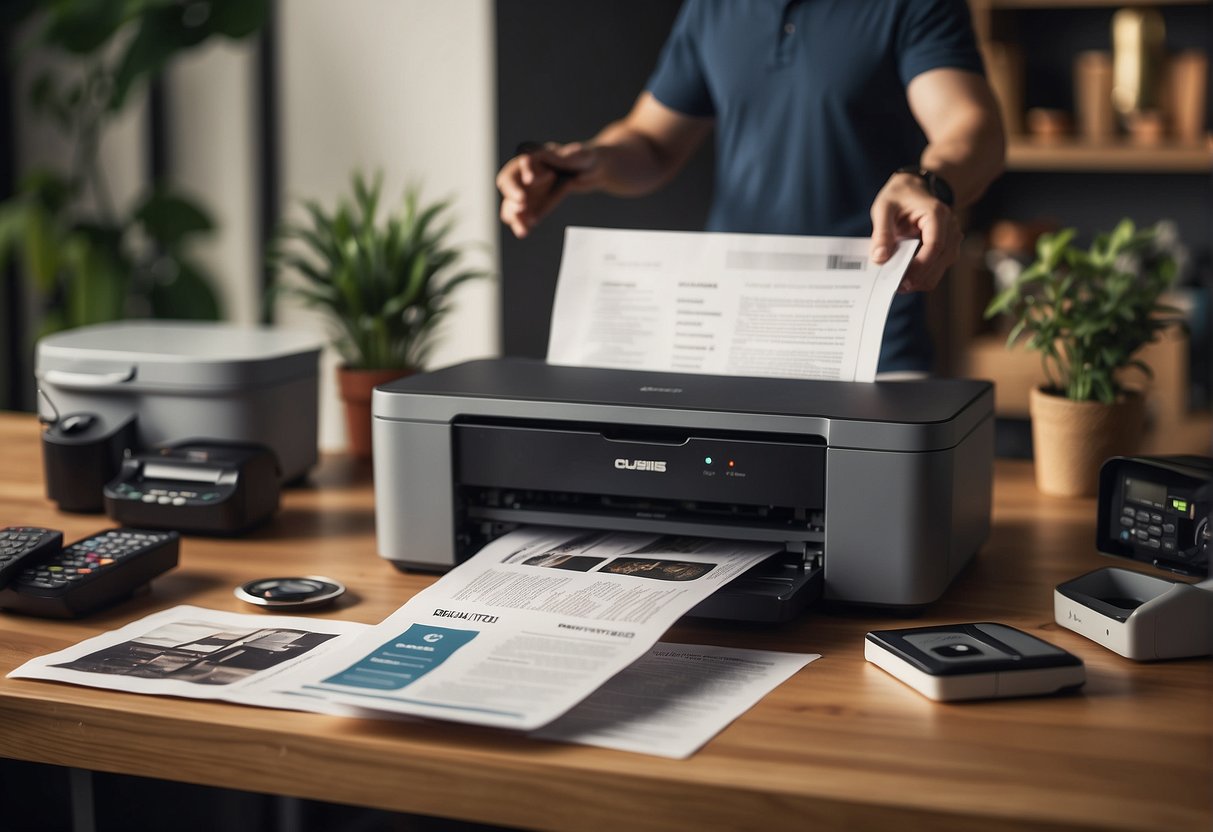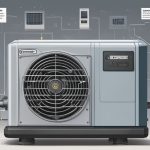Purchasing a printer can be a daunting task given the variety of models, features, and technologies available. Whether for home or office use, the right printer can dramatically improve productivity and efficiency. It’s important to consider what functions the printer needs to fulfill, whether it is printing documents, photos, or other materials. With advancements in technology, printers now offer a wide range of capabilities beyond just printing, including scanning, copying, and even faxing.
When selecting a printer, it is vital to understand the different types available, such as inkjet, laser, and all-in-one models. Each type offers distinct advantages and potential drawbacks, depending on the intended use. Inkjet printers are typically best for high-quality photo prints, while laser printers excel at producing crisp text documents quickly. All-in-one printers offer a versatile solution that can save space and centralize tasks. Beyond the basic function, features like print quality, speed, connectivity options, and ease of use are key considerations. Moreover, the total cost of ownership, which includes the initial purchase price as well as ongoing expenses for consumables like ink or toner, should be carefully evaluated.
After understanding the printer basics and determining personal or business needs, the final step is to choose a reputable brand and model that will deliver consistent performance and align with the specific printing requirements. Clear and accurate specifications can help to compare different models effectively. For those with specialized printing needs, such as large-format printing or mobile connectivity, additional research into specialized printers might be necessary.
Key Takeaways
- Choosing the right printer depends on understanding various printer types and intended use.
- Evaluating key features, print quality, and total cost of ownership is crucial.
- Selecting a trusted brand and model tailored to specific needs ensures satisfaction.
Understanding Printer Types
When selecting a printer, it’s crucial to understand the different types of printers available and how they suit various printing needs. Each printer type utilizes distinct technology to fulfill specific functions, from everyday document printing to high-quality photo reproduction.
Inkjet Printers
Inkjet printers are versatile devices suitable for a range of printing tasks, from text documents to high-resolution images. They work by propelling tiny droplets of ink onto paper. Key features include:
- Capacity: Ideal for moderate home or small office use.
- Quality: Exceptional for printing photos and color documents.
Laser Printers
Laser printers are known for their speed and efficiency, making them a preferred choice for offices and users with high-volume printing needs. They use toner and a laser beam to produce sharp text and graphics. Key features comprise:
- Speed: Faster printing than inkjet printers.
- Cost-Effectiveness: Lower cost per page for long-term use.
All-In-One Printers
All-in-one printers, also known as multifunction printers, combine printing, scanning, copying, and sometimes faxing capabilities in one machine. They cater to users seeking convenience and space-saving solutions. Key features are:
- Functionalities: Multiple functions beyond just printing.
- Variety: Available in both inkjet and laser technologies.
Photo Printers
Photo printers are specialized inkjet or dye-sublimation printers designed specifically for reproducing high-quality photographs. They often support various photo sizes and types of paper finishes. Key features include:
- Quality: Higher resolution and color accuracy for photo prints.
- Paper Compatibility: Use of glossy, matte, and fine art papers for printing.
Mobile Printers
Mobile printers provide portability for people needing to print on-the-go. They tend to be compact and can often connect wirelessly to smartphones or laptops. Key features encompass:
- Portability: Compact and lightweight for easy transport.
- Connectivity: Often include wireless options such as Bluetooth or Wi-Fi.
By understanding the main types of printers and their particular attributes, users can make informed decisions that align with their printing requirements and usage patterns.
Key Printer Features
When evaluating printers, it’s important to consider the features that align with your specific printing needs, such as print speed, resolution, and connectivity options.
Print Speed
Print speed is measured in pages per minute (ppm). For busy offices, a high ppm rate is essential. Laser printers often offer faster speeds compared to inkjet printers. Duplexing, or double-sided printing, can reduce speed but saves on paper.
Resolution
The resolution, measured in dots per inch (dpi), determines print quality. A higher dpi indicates finer detail, especially important for high-resolution images and professional documents. Common resolutions include 600×600 dpi for basic text and 4800×2400 dpi for high-quality photos.
Paper Handling
Paper handling refers to the size and type of media a printer can accommodate. Look for printers with adjustable trays to handle various paper sizes, and those supporting duplexing to ensure efficient double-sided printing without manual intervention.
Connectivity Options
Modern printers offer various connectivity options:
- USB: Essential for a direct connection to a computer.
- Wi-Fi: Allows for wireless printing from multiple devices within a network.
- Wireless Connectivity: Includes technologies like Bluetooth for easy mobile printing.
Additional Features
Additional features can significantly enhance usability:
- Touchscreen Control Panel: Simplifies navigation and printer management.
- Duplexer: An integrated duplexer allows automatic double-sided printing, saving time and paper.
Selecting a printer with the right combination of these features can lead to increased efficiency and higher satisfaction with your printing tasks.
Evaluating Print Quality
In assessing print quality, one must consider how accurately a printer reproduces colors and its capability to handle complex graphics. These factors are critical for ensuring that printed materials meet specific standards, whether for professional publications, graphic designs, or photographs.
Color Accuracy
Color accuracy is paramount when it comes to print quality. It involves the printer’s ability to match the colors of the source material. High color fidelity is especially important for tasks such as photo printing or branding materials, where precise color reproduction is non-negotiable. To evaluate this:
- Calibration: Check if the printer supports color calibration tools for accuracy.
- Color Model: Determine if the printer operates with CMYK or RGB color models, as this impacts the range of reproducible colors.
- Print Samples: Review print samples and compare them with digital versions for color consistency.
Graphics Performance
The printer’s graphics performance pertains to its ability to print complex images with fine details while maintaining clarity. For professional applications, it’s not enough that a printer manages basic text documents; it should also excel in rendering graphics. Look into:
- Resolution: Higher dots per inch (DPI) typically correlates with better fine detail reproduction.
- Ink Droplet Size: Smaller droplet sizes can contribute to the sharpness and delicacy of graphics.
- Speed vs. Quality: Assess if the printer maintains high graphical standards even at faster printing speeds.
By examining these specific aspects, buyers can make informed decisions on printers that align with their quality needs.
Cost Considerations
When purchasing a printer, it’s crucial to assess ongoing expenses along with the initial price. Notably, ink and toner expenditures can have a significant impact on the total cost of ownership.
Ink And Toner Costs
The cost of ink and toner cartridges is a recurring expense that can quickly surpass the initial cost of the printer itself. On average, traditional ink cartridges might require replacement after printing 200 to 300 pages, while toner cartridges can last for around 1,000 to 2,000 pages. HP, for instance, offers cartridges at various price points and page yields, influencing the overall printing costs.
High-Yield Ink Options
High-yield ink cartridges are a cost-effective solution for frequent printing. These cartridges contain more ink and can print a larger number of pages before needing replacement, potentially offering users better value per page printed. For example, a standard HP cartridge may print 200 pages, whereas a high-yield version might handle up to 600 pages.
Total Cost of Ownership
Total cost of ownership (TCO) encapsulates all costs related to the printer over its lifespan, including the purchase price, cost of consumables like ink or toner, maintenance, and repairs. Printers with a lower initial price may have higher ink or toner costs, thus increasing the TCO. HP’s Instant Ink program addresses this by providing users with a subscription-based model that can lead to savings on ink costs, factoring directly into the printer’s TCO.
Printer Setup And Ease Of Use
Selecting a printer that promises a straightforward setup process along with ease of use is vital. The initial configuration and the availability of necessary software and drivers are two primary areas that directly impact user experience.
Initial Setup
When unboxing a printer, one should find a clear, step-by-step guide that usually includes illustrations for each stage of the setup. Manufacturers often provide Quick Start guides to help with this. In terms of hardware, the setup involves:
- Removing packaging materials and protective tapes.
- Installing cartridges or toner: Ensuring correct insertion into designated slots.
- Loading paper: Placing paper into the tray, adjusting sliders to fit size.
Connectivity setup includes connecting to a power source and establishing a connection to a computer or network, which can be done via:
- USB connection: A direct link to a single computer.
- Wi-Fi or Ethernet: For networked or wireless printing capabilities.
Software And Drivers
To function properly, printers require the latest drivers and software, which are usually provided by the manufacturer on a CD or available for download on their website. Attention to the following is important:
- Compatibility: The software must be compatible with one’s operating system.
- Updates: Regular updates may be needed for enhanced functionality and security.
| Step | Description |
|---|---|
| Download | Access manufacturer’s website to locate software. |
| Install | Run the installation program and follow prompts. |
| Configuration | Adjust settings like print quality and paper size. |
Properly installed software allows users to access all printer functions, including scanning and faxing where applicable, and to monitor ink or toner levels. Some manufacturers offer apps that enable printing from mobile devices, adding to ease of use.
Integration of the printer with existing networks or cloud services may require additional configurations, which should be guided by user-friendly interfaces or step-by-step instructions within the software.
Connectivity And Mobile Printing
When selecting a printer, it’s imperative to consider how it will connect to various devices. Modern printers offer versatile connectivity options to cater to different user needs, from wireless operations to mobile-device compatibility.
Wi-Fi And Ethernet
Printers with Wi-Fi connectivity allow users to print from multiple devices without the need for cables. They often support a range of wireless features, including:
- Wi-Fi Direct: Enables direct printing from devices without needing a network.
- Network Printing: Allows connection to a home or office network for easy access by anyone on the same network.
Ethernet connections provide a stable, wired network connection which is ideal for:
- Environments with high-volume printing needs.
- Places where Wi-Fi is unreliable or not secure.
IOS And Android Compatibility
Modern printers come with compatibility for mobile operating systems such as iOS and Android. Here’s what users can expect:
- Apple AirPrint: Enables iOS users to print directly from their Apple devices without installing additional drivers.
- Google Cloud Print: (Note: As of December 2020, Google Cloud Print is no longer supported.) Users need to look for alternatives supported by Android that allow similar functionalities.
- Brand-specific apps: Printer manufacturers often offer their proprietary apps for both iOS and Android that facilitate printing from mobile devices.
Web Connectivity
Web connectivity extends a printer’s capabilities beyond basic printing tasks. Important aspects include:
- Email Printing: Send documents to a printer’s email address to print from anywhere.
- Remote Printing Services: Services like HP ePrint or Epson Connect provide options to print even when away from the printer.
Printers capable of connecting to the web can often access and print directly from cloud services, such as:
| Cloud Service | Description |
|---|---|
| Google Drive | Access and print documents stored in Google Drive. |
| Dropbox | Print files directly from Dropbox accounts. |
| Microsoft OneDrive | Integrate and print from Microsoft’s cloud storage. |
By ensuring your printer is equipped with the right connectivity options, you can maximize its utility across different devices and platforms.
Understanding Printer Specifications
When selecting a printer, evaluating its specifications is essential to ensure it meets your exact printing needs. The duty cycle and multifunctional capabilities like printing, scanning, copying, and faxing are pivotal specifications to consider.
Duty Cycle
The duty cycle of a printer is an indication of its maximum workload capacity, usually expressed as a number of pages per month. It is important to align the printer’s duty cycle with the expected printing volume to avoid overuse or underuse. For example:
- Small Office/Home Office: Typically requires a printer with a duty cycle of 3,000 to 5,000 pages per month.
- Medium-sized Business: May need printers that support 10,000 to 20,000 pages per month.
- Large Organizations: Should consider printers with a duty cycle upwards of 30,000 pages per month.
Print, Scan, Copy, Fax Capabilities
Printers often come with additional features beyond just printing. These multifunction printers can be a one-stop solution for several office tasks:
- Printing: The core function of the device, often denoted by print speed (pages per minute) and resolution (dots per inch).
- Scanning: Multifunction printers include a scanner that digitizes documents, often specified by optical resolution and scan speed.
- Copying: A copier feature should support both black and white and color copies, with specifications like copy speed and maximum number of copies to consider.
- Faxing: Although less common now, some printers include a fax machine, which should support fax transmission speed and memory.
It’s crucial to assess these functions based on how often they’ll be used and the quality required for each task.
Printer for Specific Needs
Choosing the right printer requires understanding the specific needs of the user or business. This section helps identify the most suitable printers for home use, small businesses, and differentiates between personal and business printers.
Home Printer
For home users, a printer should cater to various tasks such as printing documents, photos, and sometimes scanning or copying. Inkjet printers are popular for home use due to their versatility in handling color prints and photographs effectively. A typical home printer selection might include:
- Canon Pixma TS9120: Best for photographs and documents.
- HP ENVY 6055: A good all-rounder with wireless connectivity.
When it comes to features, home users should look for:
- Connectivity: Wi-Fi and mobile printing.
- Compact Design: Saving space is often a priority.
- Cost-Efficiency: Affordability in both upfront and running costs.
Small Business Printer
Small businesses often require a printer with higher output capabilities and enhanced durability. Laser printers serve small businesses well, particularly when the focus is on printing text-heavy documents. For a small business printer, considerations may include:
- Brother HL-L8360CDW: Excellent for high-volume printing.
- HP LaserJet Pro M454dw: Reliable for regular business document printing.
Key features for small business printers are:
- Speed and Volume: The ability to handle a significant number of pages per minute.
- Durability: A robust build to withstand frequent use.
- Cost-Efficiency: Competitive cost per page for budget management.
Personal vs. Business Printer
The main distinction between personal and business printers lies in performance, functionality, and cost efficiency. Personal printers are optimized for lower volume and a diverse range of printing tasks suitable for home-office or home users, prioritizing convenience and space-saving designs.
Business printers, on the other hand, are tailored to withstand heavy-duty use and larger print volumes typical for an office setting. While personal printers prioritize initial cost savings, business printers focus on long-term efficiency and lower total cost of ownership, taking into account factors like speed, volume, and ongoing operating expenses.
- Personal Printer: Suited for individual use with an emphasis on quality and occasional printing.
- Business Printer: Engineered for the rigors of continuous, high-volume printing needs.
Specialized Printing Needs
When considering printers for specific tasks, one must evaluate their unique requirements. Different models excel at varying tasks, and selecting the right one can save time and resources.
Large Volume Printing
For environments where print jobs are frequent and voluminous, such as in an office setting, a high-capacity printer is essential. Laser printers are the preferred choice for large volume printing as they are faster and generally more cost-effective per page than their inkjet counterparts. They make use of toner cartridges, which last longer than traditional ink cartridges, thus minimizing the frequency of replacements. When printing on standard office paper, these printers maintain productivity and efficiency.
- Advantages: Speed, cost-per-page efficiency, longer intervals between cartridge replacement
- Paper Types: Generally handles a wide range, including recycled and premium laser paper
Quality Photo Prints
For those requiring exceptional photo prints, inkjet printers with specialized photo cartridges produce more detailed images and richer colors compared to standard models. It’s crucial to invest in printers capable of handling diverse paper types, including glossy, matte, and luster photo papers, to ensure the highest quality prints.
- Key Features to Look For:
- High resolution printing (measured in DPI)
- Ability to handle various photo paper finishes
- Usage of multiple ink cartridges for an extensive color range
Tank Printers
Tank printers are gaining popularity for their cost-effectiveness and less frequent ink refilling needs. Instead of traditional cartridges, they use large, refillable tanks that provide a much higher yield of pages before needing to be refueled. This makes them ideal for both regular document printing and high-quality photo prints without the concern of running out of ink unexpectedly. These printers work well with a range of paper types and are especially suited for mixed-media artists or small businesses that have a consistent demand for diverse printing tasks.
- Benefits:
- Lower ongoing costs
- High page yield
- Versatility in printing on different media types
Choosing a Brand And Model
When selecting a printer, it’s important to consider the different offerings from leading brands like Canon and HP. Both brands provide a variety of models that can cater to individual printing needs, from basic document printing to high-quality photo outputs.
Canon’s Range
Canon offers a wide selection of printers renowned for their photo printing capabilities. They are a preferred choice for photographers and professionals who prioritize image quality.
- PIXMA TR Series: Ideal for home offices, these printers balance photo and document printing.
- PIXMA TS Series: Designed for superior photo printing with individual ink systems.
- MAXIFY Series: Tailored for businesses needing efficient volume printing.
Canon’s options also include portable printers like the SELPHY Series, which are compact and suitable for printing photos on the go.
HP’s Selection
HP emphasizes versatility and technology integration, with options like the HP Instant Ink program to manage ink supplies.
- OfficeJet Series: All-in-one printers that suit home office and small business needs.
- Envy Series: User-friendly for everyday document and photo printing.
- LaserJet Series: High-speed and high-volume printing for professional environments.
HP’s Instant Ink subscription service ensures that users never run out of ink. Their printers automatically detect low ink levels and order replacements, which are conveniently mailed directly to the user.
Frequently Asked Questions
When considering a printer purchase, consumers often have a variety of questions pertaining to functionality, suitability for specific purposes, and technical specifications. This section aims to address the most common inquiries.
What are the key differences between inkjet and laser printers?
Inkjet printers use liquid ink to produce images, excelling in color gradation and photo printing. Laser printers, on the other hand, use toner—a fine powder—and often offer faster printing speeds and lower cost per page, especially for black and white documents.
How should I determine which printer is best for home use?
For home use, assess your printing volume and whether you require color output. Generally, a moderate-use inkjet is suitable for occasional color needs, whereas a monochrome laser printer may be more cost-effective for frequent document printing.
What factors should I consider when choosing a printer for a small business?
Small business printers should offer reliability, efficient ink or toner usage, and multi-function capabilities. Considering a printer with networking capabilities and higher page-per-minute output can improve office productivity.
What features are important to look for in an all-in-one printer?
All-in-one printers should have a robust set of features including printing, scanning, copying, and potentially faxing. Look for high-resolution scanning, automatic document feeders, and duplex printing for enhanced efficiency.
What are the essential specifications to assess when purchasing a printer?
Key specifications include print resolution (measured in DPI), print speed (pages per minute), connectivity options (such as USB, Wi-Fi, Ethernet), paper handling capacities, and monthly duty cycle, which indicates durability.
How can I select the best printer based on my specific printing needs?
Identify your primary printing tasks, be it photo printing, bulk document production, or varied daily use. Match those needs against a printer’s output quality, speed, and feature set, while also considering long-term operational costs like cartridge replacement or maintenance.
Conclusion
When purchasing a printer, buyers should weigh their options carefully, considering cost, functionality, print quality, and brand reputation. A well-informed decision saves time and money and ensures that the printer meets the specific needs of the user.
- Cost: Buyers must balance initial costs with long-term expenses such as cartridge replacements and maintenance.
- Functionality: Evaluate the need for multi-function features such as scanning and faxing.
- Print Quality: Prioritize resolution and color accuracy for professional or photographic use.
- Brand Reputation: Research and select a brand with reliable customer service and positive reviews.
Individuals or businesses should further consider the printer’s connectivity options and compatibility with their existing devices. Ease of use and eco-friendliness might also factor into the final choice.
Identifying the primary usage—be it for home or office, text or photos—guides the buyer toward the most appropriate device. Future-proofing investments by selecting a printer that can handle emerging technologies and software updates is also beneficial.
In summary, meticulous consideration of these aspects leads to a satisfactory printer purchase.

